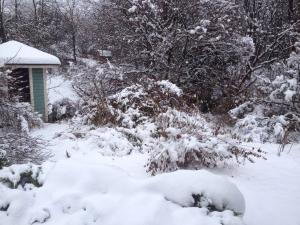Blog
Swiftly Tilting Planet
11 December 2013
 Brian Koberlein
Brian KoberleinAs I write this, it is the end of a long day. It’s the last week of classes at RIT, so things are rather hectic. Usually my day ends with a calm drive home, when I can think about topics to write about. But this evening has seen a winter storm move in, so instead of a calm drive, it was white-knuckle time while I drove through thick slushy snow in the dark. So I had plenty of time to contemplate the fact that winter storms occur because I live on a rock.
This particular rock speeds around its parent star at about 100,000 kilometers per hour. The rock has a roughly circular orbit, but its axis of rotation is tilted about 23 degrees from its orbital plane. This means that for about half the year the northern hemisphere on which I live is tilted toward the Sun, which makes for longer days where the Sun has a higher path in the sky. For the other half the northern hemisphere is tilted slightly away from the Sun, making for shorter days where the Sun is lower in the sky. It just so happens that it is near the time when the northern hemisphere will experience its shortest period of daylight.
Having shorter periods of daylight with the Sun lower in the sky means that the surface of this rock receives less radiant heat from the Sun, thus making the temperature in my part of the world colder.
Of course it isn’t quite that simple. The relatively high rotation rate of this rock (about 24 hours) means that the surface undergoes fairly swift periods of heating and cooling. The rock also has a fairly copious atmosphere with large quantities of water vapor. This means that the surface temperature does not merely rise and fall as the planet rotates, but instead has regions of warmer and cooler air that can swirl around, collide and do all sorts of interesting things.
This rock also has high concentrations of surface water, with about 70% of its surface covered with oceans and lakes. This means there is a ready source of water that can evaporate into the atmosphere. This can create clouds and rain, but it turns out that the surface temperatures of this planet are near the freezing point of water at typical atmospheric pressure, so sometimes instead of falling as droplets of water, it freezes into thin crystals of ice and floats to the ground.
If enough of it floats to the ground you get a winter storm. Fortunately, my sistren and brethren on this rock are familiar with this kind of thing, and can generally deal with it. It just takes some slow and careful driving to get home sometimes.
Living on a rock hurtling through space is never dull, but I wouldn’t have it any other way.